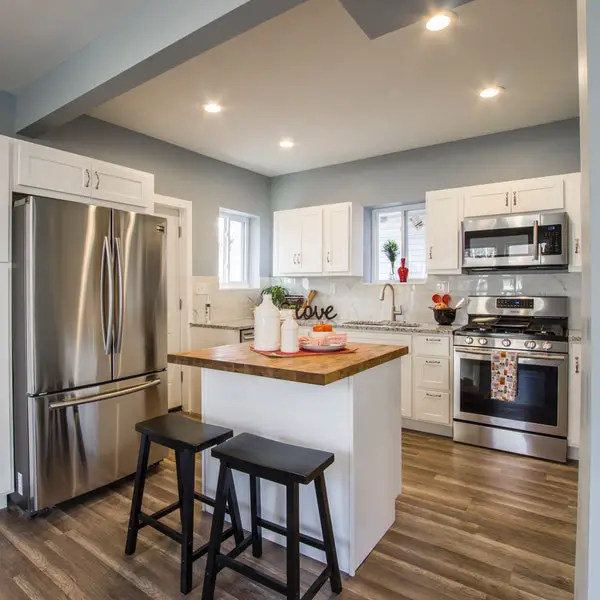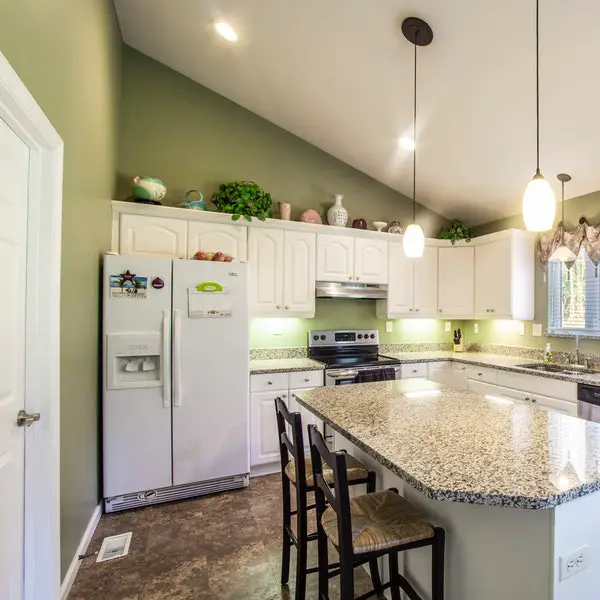
So you’ve gone through numerous reviews, made your choice (at long last!), and have placed your order. Your dream refrigerator is finally on your doorstep but now, the process of actually setting it up has got you scratching your head. Well fret not, in this post, we’ll be showing you how to install a refrigerator properly.
Before we delve in, we’d like to reassure you that installing a refrigerator of any type, size or model is generally quite simple and takes only about 2 hours or even less. Should you get stuck though, the product insert always comes in handy.
Now, let’s jump into learning how to install a refrigerator!
Table of Contents
Easy Steps on How to Install a Refrigerator
Create Space
You should create space where you intend to install the refrigerator beforehand. This sounds like an obvious thing to do, but many tend to be so carried away with picking the right unit and tracking their orders that they forget to actually plan where it would be set up. You might be one of them, but no worries, it’s not too late!
Some things to put into consideration when selecting the installation point include:
i. Location: Your chosen space should be located away from direct sunlight and other weather elements.
ii. Clearance space: (back, sides, front) as recommended by the manufacturer. This is important for proper heat dissipation and efficient operation of the refrigerator.
iii. Connection sockets and accessories: Your unit would need a power supply to run and this should be readily available where you intend to set up. Make sure the sockets are in good condition to prevent sudden shutdown or mishaps.
Also, decide if you’d need an extension cord or if you should attach a surge breaker.
iv. Leveling: The surface should be level to avoid tilting the unit. This causes imbalance and can give rise to rattling noises when the unit is operating.
Some refrigerators don’t have adjustable leveling feet, so if your model is one of those and the most suitable spot for you is not level, consider setting up a wooden platform that balances that out. Note that this should be strong enough to bear the weight of the refrigerator.
Leveling a refrigerator is pretty straightforward for the most part. Learn how to in this short video by CNET:
v. Accessibility: Depending on the purpose of the refrigerator, you should set up where it is easily accessible and convenient for use. That way, you wouldn’t have to move it around again to a more suitable place.
Unpack The Refrigerator
For the unpacking process, we recommend that you do it carefully and where there’s enough room. Also, hold on to the packaging materials for a while, especially the unit’s packaging box. This is in case you are not satisfied with the unit, for instance, if it comes in the wrong color, if it’s a completely different model from what you ordered, if it’s damaged or not working at all.
That way, you can use the materials to pack it up and return it. We hope you won’t have to, but it doesn’t hurt to take precautions.
After removing the packaging, open the refrigerator and remove the power cord(s) and other accessories. Make sure to check all parts carefully to make sure they are not missing, damaged, or out of position.
Make Adjustments
You might want to make some adjustments here and there. If you would like to reverse the doors, this is the time to do it.
Most units come with reversible doors that are attached with bolts at the top and bottom of the door. Unscrew these bolts carefully, re-position on the side you want, and secure in place by screwing in the bolts.
For any adjustments you need to make, always refer to the user’s manual and follow the steps.
Move The Refrigerator Into Position
Now carefully move the refrigerator into the space you’ve created for it. Take care to do this in an upright position.
If you’re setting up in a built-in cabinet, or against a wall, remember not to slide it in completely but to give enough space at the back and sides. Again, always adhere to the manufacturer’s recommendations.
You might need an extra hand to do this properly.
[amalinkspro type=”cta-btn-css” ctabtn-id=”” asin=”B06W9PBPTP” apilink=”https://www.amazon.com/dp/B06W9PBPTP?tag=refrigeratorsreviewed-20&linkCode=osi&th=1&psc=1″ addtocart=”false” new-window=”true” nofollow=”true” alignment=”alignright”]Click here to check out the Haier 16-Cubic Feet 4-Door Refrigerator on Amazon[/amalinkspro]
Adjust The Temperature
After moving into position, it’s time to make temperature adjustments using the temperature control that comes with it (whether a digital LCD control or mechanical thermostat ).
Whatever temperature you choose, keep in mind that the recommended safe temperature for storing food is at most 40 degrees Fahrenheit.
Plug It In and Switch On
After all is said and done, it’s time to get plugged in! Connect the power cord to the power socket carefully and then switch it on.
Note that it’s important that you leave the refrigerator to settle down for a while before switching it on, especially after all the moving around before and after delivery. This is because, if it was aligned sideways for a long while, the fluids would have been displaced and would need time to settle back into the right places.
You need only about 2 hours for the refrigerator to settle down. When in doubt, consult the user’s manual for the required time indicated by the manufacturer as it can differ across brands and models.
Once it’s settled, you can go ahead and turn it on. If the unit itself has a power-on switch or button, turn it on there too.
Leave The Temperature To Drop Down
We know, there seems to be a lot of settling down required, but that’s because it is important. In this case, it is necessary to allow time for the temperature to settle.
This might take up to 6 or 12 hours, after which you check if the temperature settings are in full effect.
Is your refrigerator a built-in model? And are you considering building refrigerator panels? Learn how to install a built-in refrigerator with refrigerator panels in this short video below:
Check out these other in-depth articles/reviews…
- How To Keep Ice Cream Frozen In A Cooler [Detailed Guide]
- Westinghouse 8-Bottle Wine Cooler — Detailed Review
- How Long Does It Take to Defrost a Refrigerator Freezer?
- Tibek 12V Mini Fridge/Warmer with Automatic Locking Handle — In-Depth Review
- How To Change The Water Filter In A Kenmore Refrigerator
- Haier 150-Can Beverage Center — In-depth Review
A Quick Recap on How To Install A Refrigerator
Installing a refrigerator can seem like some real techie stuff but it’s quite simple, as long as you follow these steps and refer to your user manual.
Upon taking delivery, unpack the unit, check for defects, and make necessary adjustments.
Then move into a suitable location, adjust the temperature settings, plug into the appropriate power outlet, leave to settle, and then switch on and wait for the temperature to become stable.
Now that you’ve learned how to install a refrigerator, it’s time to set up your unit, stock it, and enjoy its work.
But before you go, do you have a refrigerator that has stopped working? Or are you curious about what you should do if your refrigerator stops working? Find out possible reasons and solutions.


Pingback: How to Reset a GE Refrigerator - In-depth Refrigerators Reviews
Pingback: How Many Amps Does A Refrigerator Use? - In-depth Refrigerators Reviews
Pingback: How to Move a Refrigerator Without a Dolly - In-depth Refrigerators Reviews
Pingback: How to Measure A Refrigerator in Cubic Feet - In-depth Refrigerators Reviews